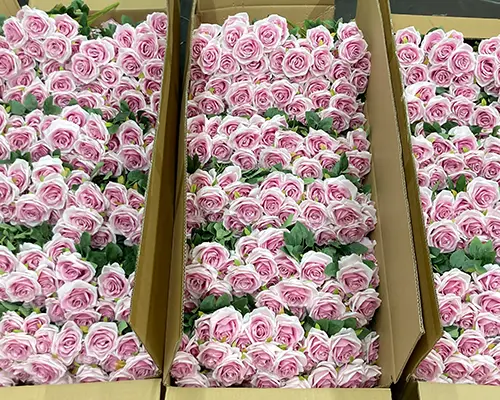Artificial Rose Material's Impact on Durability
2025-07-08
Artificial roses have become increasingly popular for decorative and commercial purposes due to their long-lasting beauty and low maintenance. A crucial factor determining the lifespan and performance of these faux flowers is the type of material used in their production. Materials such as silk, polyester, plastic, and latex each contribute differently to the durability, appearance, and application of artificial roses.
Silk is one of the most traditional and aesthetically pleasing materials used for artificial roses. Its soft texture and natural sheen closely mimic real rose petals, making it a preferred choice for high-end arrangements. However, silk is prone to fading when exposed to sunlight and can easily fray over time. Although beautiful, silk roses require careful handling and are best suited for indoor environments where they are protected from moisture and direct UV exposure.
Polyester is another commonly used material, offering a balance between appearance and durability. It is more resistant to wear and fading than silk and is often treated to be water-repellent or UV-resistant. This makes polyester roses more versatile, allowing them to be used both indoors and outdoors. They also tend to be more affordable than silk variants, making them popular in event decorations and commercial displays.

Plastic roses, while less realistic in appearance, offer superior durability. They are waterproof, weather-resistant, and capable of withstanding physical handling, making them ideal for outdoor arrangements or environments where longevity and robustness are priorities over aesthetics. Plastic flowers are commonly used in graveyard displays, public spaces, or situations requiring frequent cleaning.
Latex is a more recent material in the artificial flower market. Known for its flexibility and soft, lifelike texture, latex offers a realistic touch and visual appeal. It also resists wear and fading better than silk but may still degrade under harsh outdoor conditions. Latex roses are suitable for premium decorative use, especially where realism is crucial.
In conclusion, the material used in artificial roses plays a critical role in determining their durability. While silk offers elegance, polyester provides balanced performance, plastic ensures toughness, and latex blends realism with resilience. Understanding these material properties helps consumers and businesses select the right type of artificial rose for their specific needs and environmental conditions.
As a professional manufacturer and supplier, we provide high-quality products. If you are interested in our products or have any questions, please feel free to contact us.